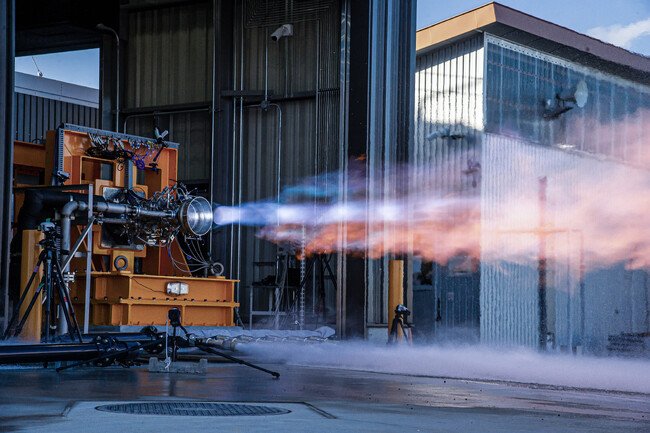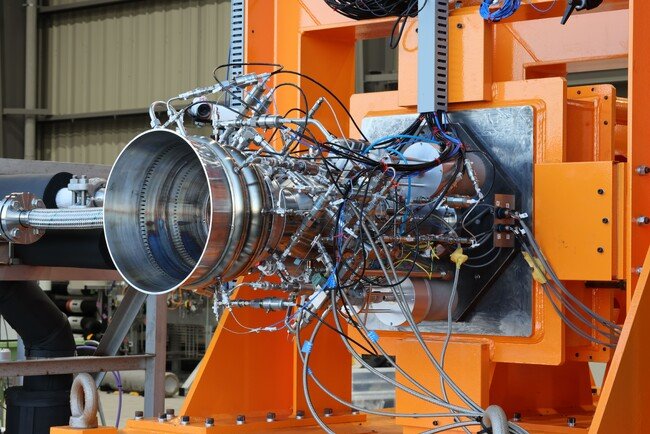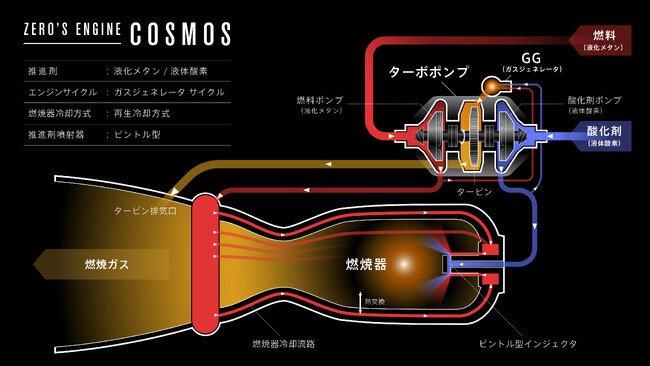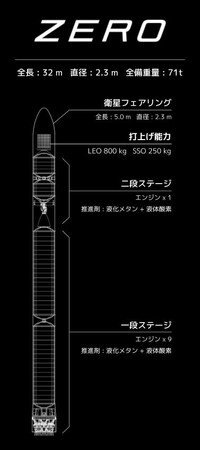Interstellar Technologies Co., Ltd.
Interstellar Technologies’ small satellite launch rocket ZERO engine combustor unit test succeeded
World’s first private sector to use liquefied biomethane derived from cow dung as fuel
……
Interstellar Technologies Co., Ltd. (Headquarters: Taiki-cho, Hiroo-gun, Hokkaido; President and CEO: Takahiro Inagawa; hereinafter referred to as Interstellar Technologies) is a space infrastructure company that aims to solve Earth’s problems through space
transportation and space utilization. The combustor of the COSMOS engine of the small satellite launch vehicle ZERO (ZERO) was displayed at the Launch Complex-0 (LC-0) in the Hokkaido Spaceport (HOSPO) spaceport. We would like to inform you that we have successfully passed the test (hereinafter referred to as the main test). In this test, we used liquefied biomethane (LBM) produced from livestock manure as fuel and confirmed that it had sufficient performance. This is the second company in the world to announce a combustion test using biomethane, following the rocket engine developed by the European Space Agency (ESA), and the first by a private rocket company (*1). [Image 1

Combustor that achieves both high combustion efficiency and low cost All of ZERO’s combustors are designed in-house and use pintle-type injectors, which are also used in SpaceX (USA) engines. It is said that the pintle type is generally difficult to achieve sufficient performance, but through joint research with the University of Tokyo and co-creation activities of the “JAXA Space Innovation Partnership (hereinafter referred to as J-SPARC)”, we are improving the design. We have overcome this disadvantage and achieved high combustion efficiency. This reduces the number of parts to a few tenths of that of conventional engines, dramatically lowering the cost of rocket engines, which are said to account for half of the entire
manufacturing cost.
This time, the combustor will be tested as a 60kN class sub-scale model, and based on the knowledge gained during the design,
manufacturing and testing process, we will proceed to develop and manufacture a 130kN class actual model.
Test name: Combustor unit test
Test purpose: Confirming the performance and durability of the combustor Period: From November 28, 2023 to the end of January 2024 (planned) Venue: Hokkaido Spaceport “Launch Complex-0”
Burning time: 10 seconds
*1 According to our research
[Image 2

The engine is named “COSMOS” and is the first to use a gas generator cycle and regenerative cooling system.
ZERO is a liquid rocket that uses LBM as a propellant and liquid oxygen as an oxidizer. ZERO’s engine uses the power of the gas generated by the gas generator to drive the turbo pump, which rotates the turbine at high speeds of tens of thousands of revolutions per minute, sending propellant into the combustor at high pressure. This is the first time Interstellar Technologies has adopted a
“regenerative cooling system” that uses fuel to cool the combustor. So far, we have conducted tests on the combustor, turbo pump, and gas generator, and we plan to move forward to integrated engine tests that combine these.
Additionally, ZERO’s engine was named “COSMOS.” The name was chosen mainly by members of the development department because cosmos is the flower of Taiki-cho, Hokkaido, and the injection shape of the pintle-type injector, which is a characteristic of this engine, resembles the petals of a cosmos flower.
[Image 3

Liquefied biomethane is environmentally friendly and has excellent performance and procurability.
Liquefied methane is a fuel that is comprehensively superior in terms of price, fuel performance, ease of handling, availability, and environmental friendliness, and is being developed by SpaceX’s Starship and other rocket companies in the United States, Europe, and China. I am. Since rocket fuel requires high-purity methane that does not contain any impurities, Interstellar Technologies has been considering ways to procure liquefied methane since 2020, when it selected it as fuel.
On the other hand, Air Water Hokkaido (Sapporo City, Hokkaido) operates mainly in the Tokachi area of Hokkaido, processing biogas generated from livestock manure into LBM, an alternative fuel to LNG (liquefied natural gas), and consuming it within the region. We have been working on building a mold supply chain. In October 2022, we will operate the first LBM manufacturing factory in Japan in Obihiro City, and we are proceeding with demonstrations.
The LBM used in this test is made by separating and refining methane, the main component of biogas, and liquefying it at approximately -160°C, with a purity equivalent to that of liquefied methane derived from LNG, which is conventionally used as rocket fuel. 99% or more). Interstellar Technologies decided to use it as the fuel for ZERO, taking into consideration its high performance and ease of procurement as it can be obtained from a factory located in the same Tokachi area. Methane is the second most influential greenhouse gas after carbon dioxide, and reducing methane emissions from cows will contribute to global warming.
This has become a major issue. Odors and water pollution caused by livestock manure are also local issues, and the
Terra Technologies is specifically working to combat global warming by making the fuel that makes up the majority of rocket weight
sustainable.
In addition, as a company headquartered in Hokkaido, where dairy farming is popular, we contribute to local production and consumption of energy and countermeasures against environmental issues.
We also aim to.
[Image 4

Strengths include competitive prices and dedicated launches
ZERO is a small rocket targeting small-sized satellites that have been driving market expansion in recent years. Based on the knowledge gained from the observation rocket MOMO, which was the first privately operated independent rocket to reach space in Japan, we are proceeding with development with the aim of launching the first vehicle. The space transportation services provided by ZERO are realized through an all-in-one development and manufacturing system, with a launch cost of less than 800 million yen per aircraft (at the time of mass production), a competitive price, and a diversifying satellite business model. Our strength lies in our flexibility, which allows us to launch exclusively for the event. For satellite operators in Japan and Asia/Oceania countries, we will provide the added value of “convenience” by being close to the launch site and requiring no effort or cost until the launch.
Increasing ZERO’s capacity and establishing a position in the Asia/Oceania market
The weight of the small satellites targeted by ZERO is in the 100 to 200 kg range. In order to keep an eye on recent trends and capture strong domestic and international demand, ZERO will increase its capacity to a rocket capable of launching up to 800 kg of satellite weight into low earth orbit (LEO). Through this, we will meet the goals set forth in this project, contribute to building a
self-sustaining domestic space transportation service, and establish a position in the Asian/Oceanian and European markets.
[Specifications of Rocket ZERO]
Total length: 32m
Diameter: 2.3m
Full weight: 71t
Propellant: Fuel liquefied methane (liquefied biomethane), oxidizer liquid oxygen
Number of engines: 9 engines in the first stage, 1 engine in the second stage Launch capacity: LEO 800kg / SSO 250kg *Future maximum capacity [Image 5
Interstellar Technologies Co., Ltd. Company Profile
Interstellar Technologies is a startup company that aims to realize a future in which space is within everyone’s reach by providing low-cost and convenient space transportation services. Headquartered in Taiki-cho, Hokkaido, development is progressing at four locations: Tokyo Branch, Fukushima Branch, and Muroran Technical Research Institute (within Muroran Institute of Technology). To date, we have achieved the first and only outer space trip by a domestic private company a total of three times using the sounding rocket MOMO, and we are now in full swing with the development of the next-generation small satellite launch rocket ZERO.
We are also involved in the satellite development project Our Stars, aiming to become Japan’s first vertically integrated rocket and satellite service.
Address: 149-7 Mebu, Taiki-cho, Hiroo-gun, Hokkaido
Representative: Takahiro Inagawa, President and Representative Director Business details: Rocket development, manufacturing, and launch services https://www.istellartech.com/
[Image 6
